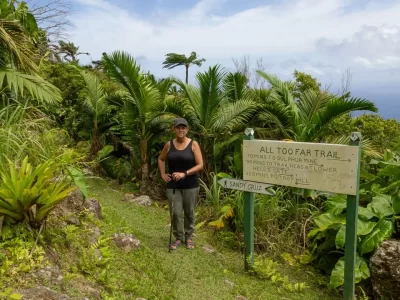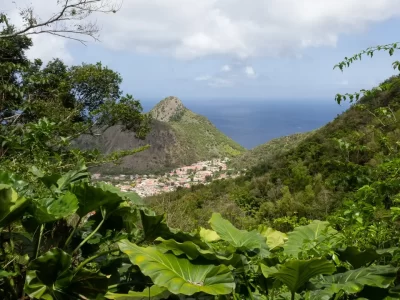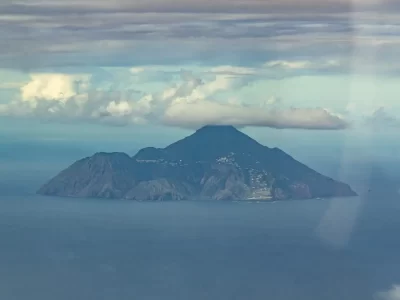Saba island is tiny, a barely-there spot in the Caribbean map. But Saba is huge when it comes to outdoor adventures, magical scenery, and an interesting history.
I’ve been to Saba twice and stayed for several months enjoying this fascinating destination. You’ll find hiking trails with spectacular views, world-class scuba diving sites, and a diverse landscape.
You’ll taste unique flavours, see local artists’ creations (or create your own piece) and learn incredible stories about Saba’s past.
Disclosure: This post contains some affiliate links. If you make a purchase through those links I will earn a commission at no additional cost to you (zero, nada). To check the full disclaimer, click here.
This is what to do on Saba island
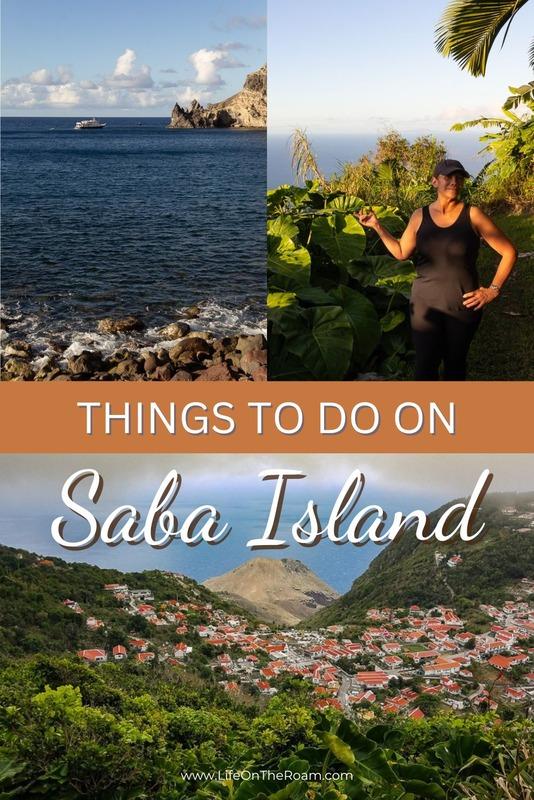
Table of Contents
Hike Your Heart Out
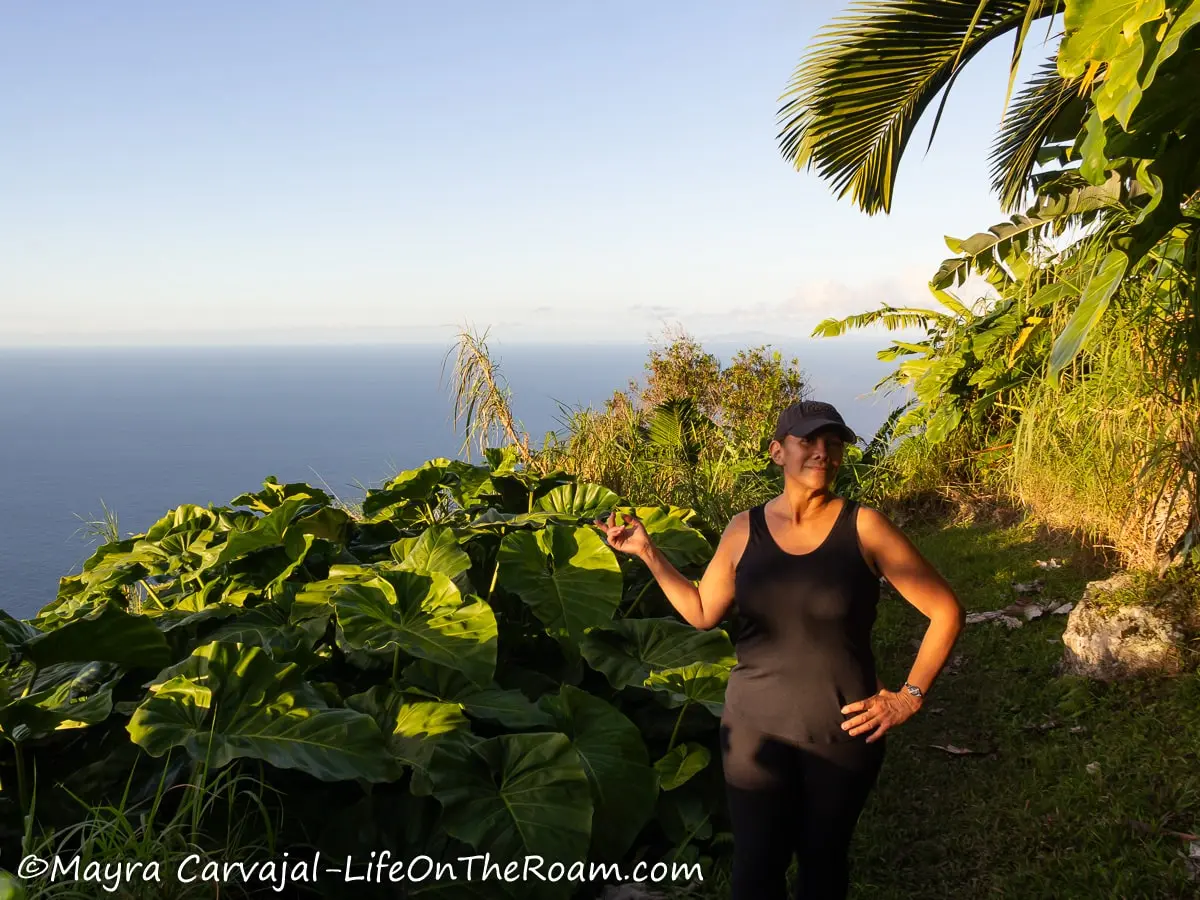
Hitting the trails is one of the best free things to do in Saba. There are nearly 20 hiking trails on Saba, from easy and short paths to long and strenuous routes.
Some more than others, they all bless you with breathtaking views of the coastline at some point.
You may think “It’s such a tiny island, aren’t they all the same?” Well, no. The scenery you’ll find at the trails around The Bottom is dramatically different from the one you’ll find above Zion’s Hill.
This is truly a hiker’s paradise. To learn more check out my detailed post about hiking on Saba.
Relax at Saba’s “Beaches”
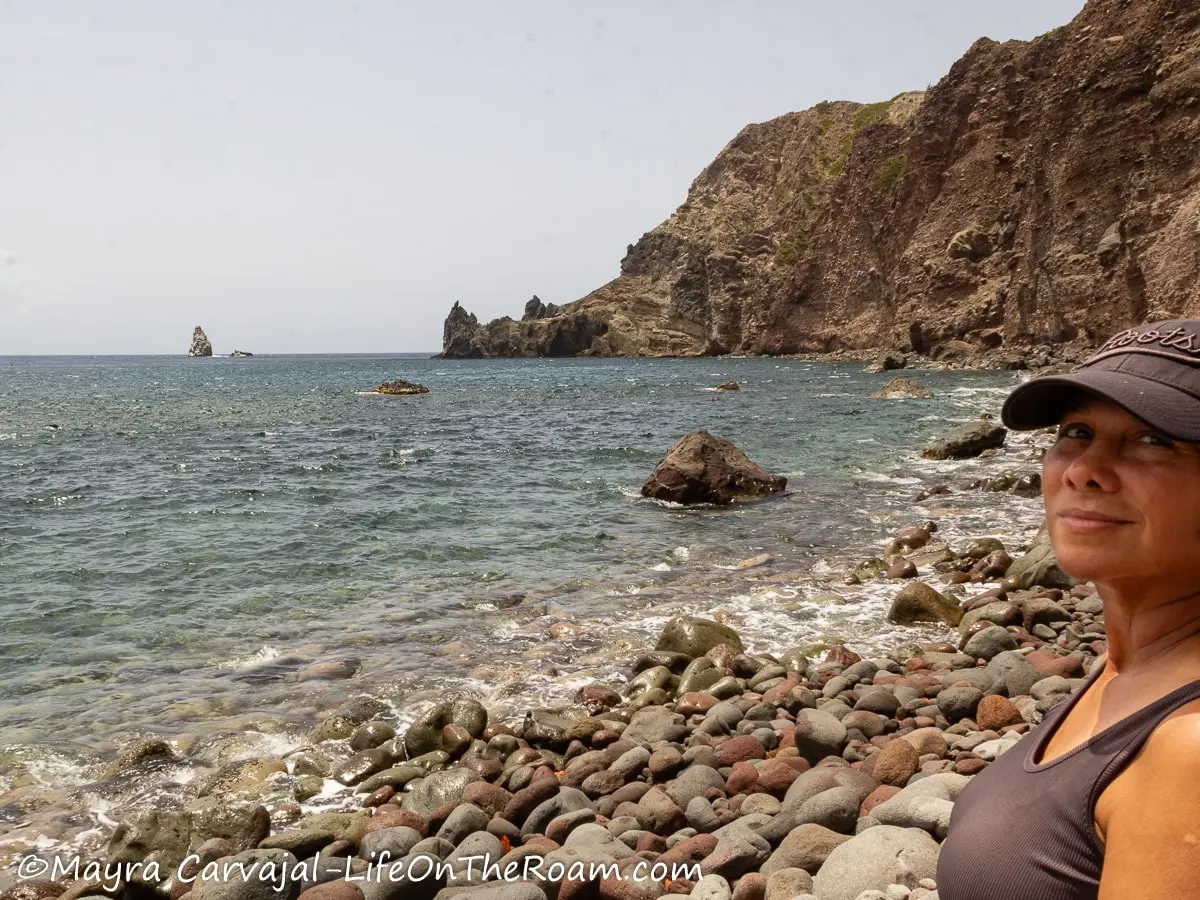
Cue the quotes. Take the word “beaches” with a big coarse fat grain of salt.
Say Caribbean and most people imagine calm turquoise waters with white powdery sand and an umbrella drink in their hands. Don’t come to Saba for that, you’ll be disappointed.
Here, the scenery is the main draw. If you’re staying for several days and you’re dying to get your feet wet there are two “beaches” you can visit. One of them seems to be part of a magician act.
Well’s Bay Beach
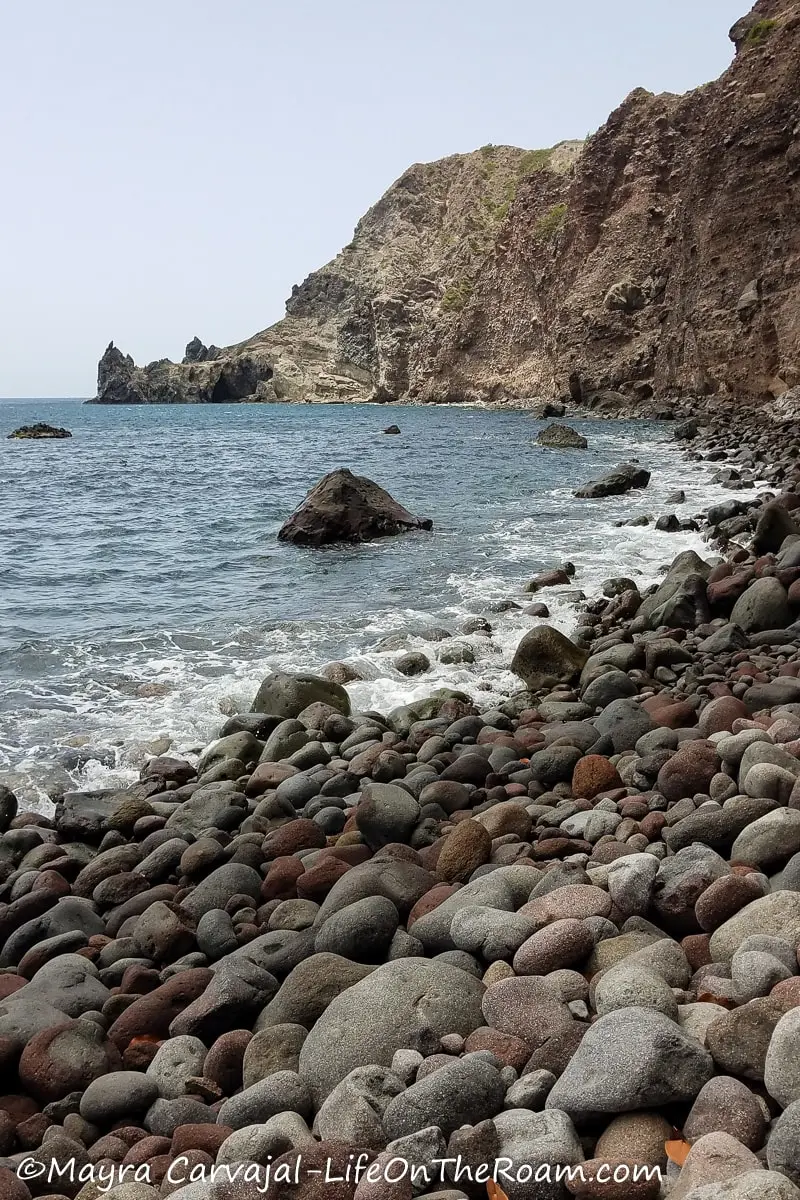
One day you see it, one day you don’t. Over the course of several months I never saw it, I only saw big rocks. But you may visit for three days and your picture, unlike mine, may show a long stretch of sand. It all depends on the weather and how the storms affect the topography of the sea bed, dictating where the sand goes. It reminded me of the shifting sands of Maho Beach in Sint Maarten, but way more extreme and prolonged.
When the sea is choppy and you can’t swim in Well’s Bay (watch your ankles if you can hear the rocks), you come here for the rugged landscape. On your right you’ll see giant boulders barely hanging on along the vertical drop, which curves and descends in the distance to form some sort of a cove.
Since Well’s Bay Beach is located on the west side of Saba it’s best to come here at the end of afternoon to catch the silhouette of the boats against the sunset.
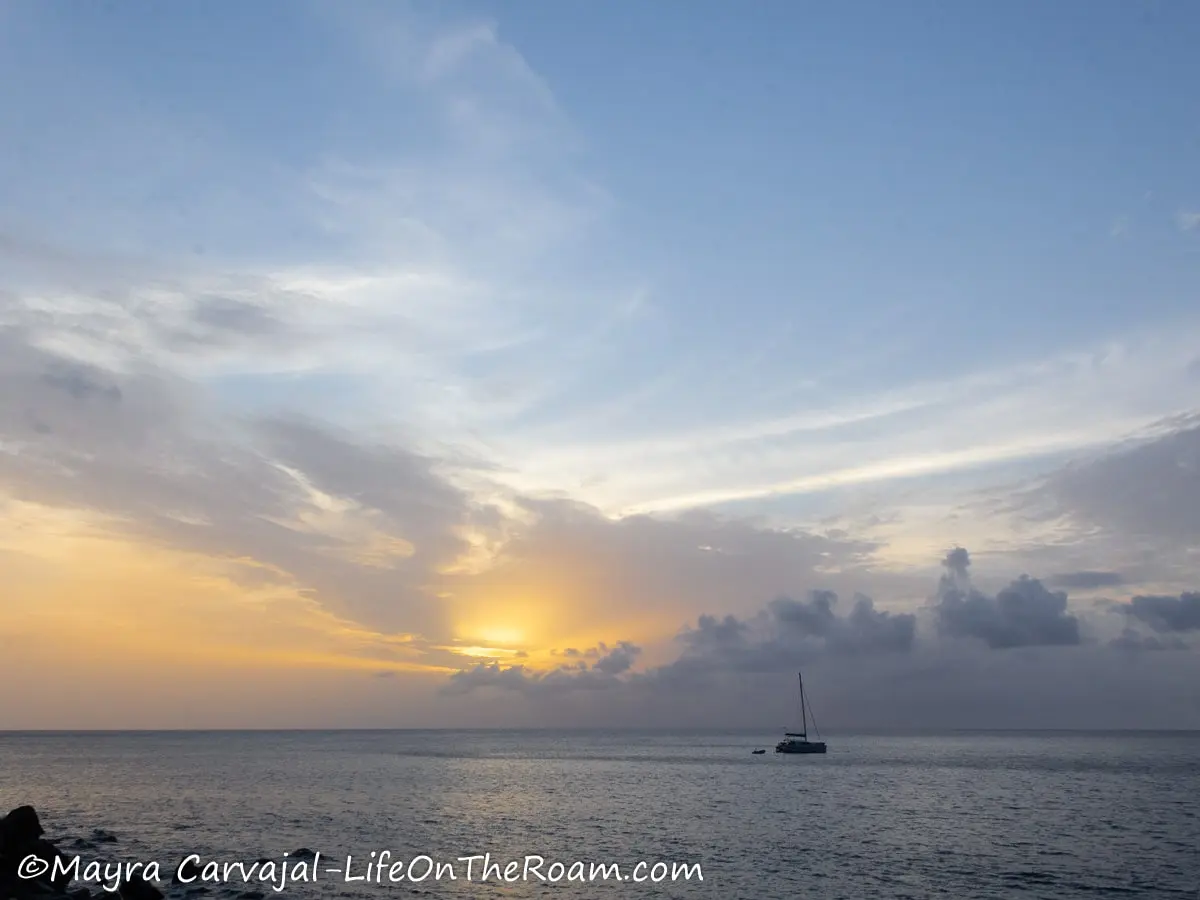
Erosion is an issue so stay away from the cliff and the falling rocks.
If the sea is calm you may attempt a refreshing swim after hiking Mary’s Point trail.
Cove Bay Beach
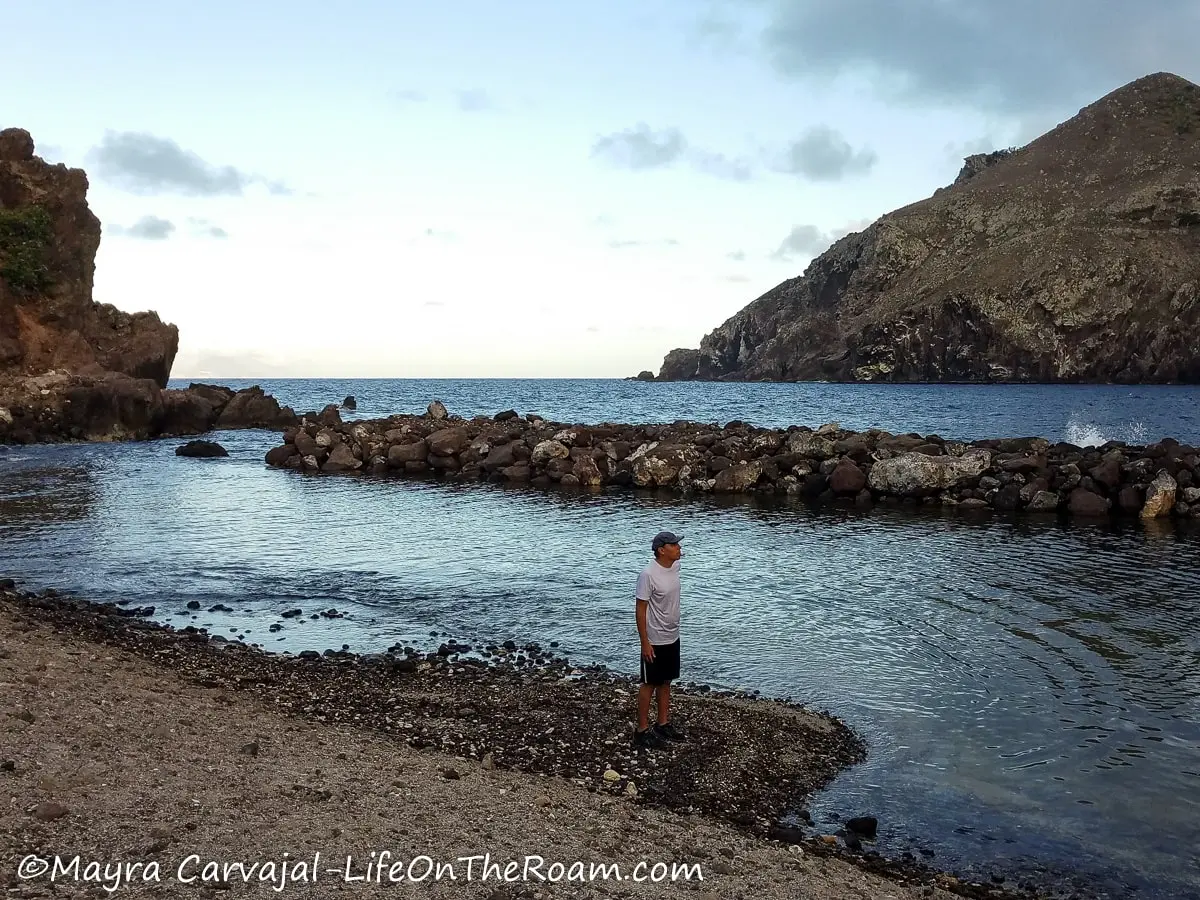
You’ll find this small, shallow, and rocky beach inside Cove Bay where you can go for a relaxing swim thanks to big boulders placed as a barrier against the waves and the massive amount of sargassum that invades the Caribbean every year.
However, the smelly stuff accumulates on the other side and well, it smells.
You may find sand during your visit as a result of replenishing efforts, but a powerful storm can change that in a heartbeat.
Cove Bay is located about one minute away from the airport and there are bathroom facilities on site.
Other than the view of Old Booby Hill, there’s nothing to write home about. Your time on Saba is better spent somewhere else, but it’s better than nothing if you want a dip.
You can also come here to cool down after hiking Spring Bay trail.
If you’re craving uncrowded sandy beaches after visiting Saba take a ferry from Saba to check the best beaches on Nevis island.
Snorkel or Dive Saba’s Pristine Marine Environment
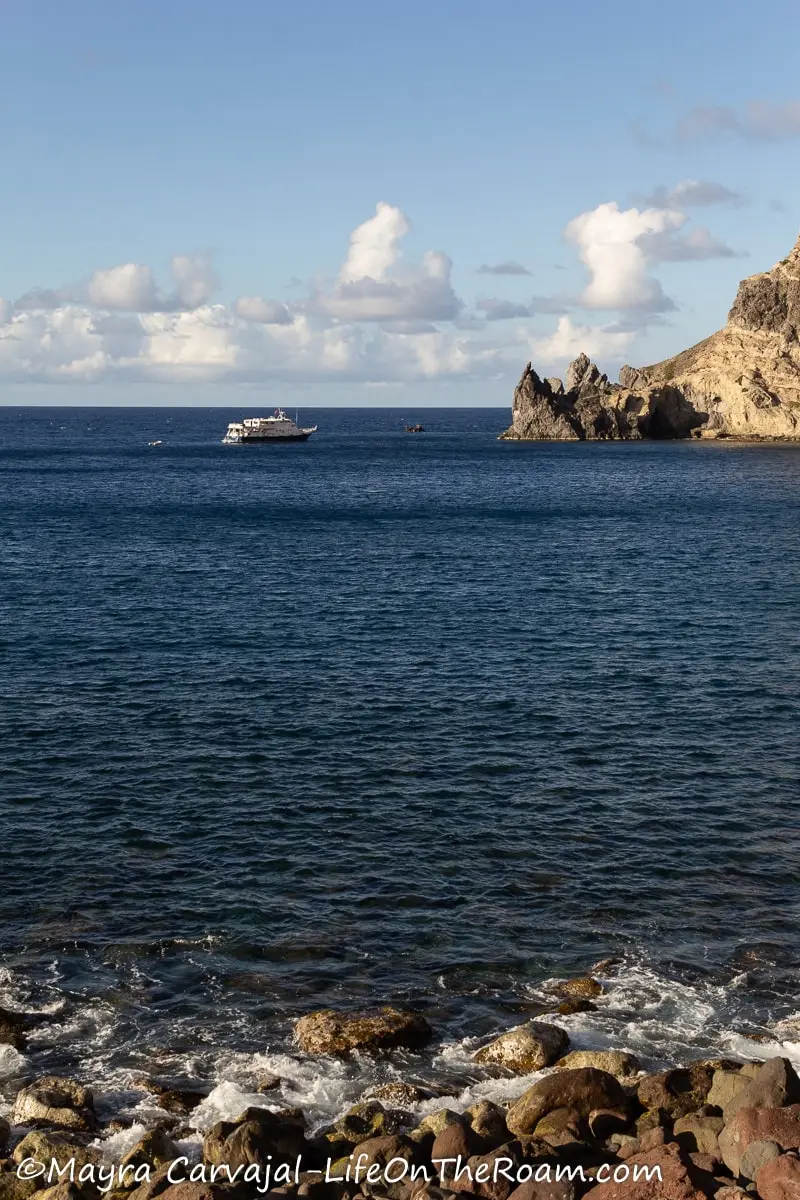
Saba is surrounded by a Marine Park where, thanks to strict regulation of activities and conservation efforts and a landscape formed by volcanic activity, you can enjoy world-class diving with 31 sites to explore.
To discover Saba’s underwater world while staying on island you must book a boat dive with Sea Saba, Saba’s dive operator. No shore dives are allowed.
If you prefer snorkeling you can either book a snorkeling trip with Sea Saba, or you can do it on your own from these spots:
Snorkel at Well’s Bay
Yes, the same site of the disappearing beach and the best site to snorkel from shore. From here, you can see the boats moored in Torrens Point, right across the beach. In addition to juvenile fish you may encounter turtles and even reef sharks.
The drawback of this site is that the entry can be tricky when the beach is in disappearing mode as it becomes a field of medium/big rocks that it’s best to avoid unless the sea is calm.
You need a taxi to get here (or rent a car) and schedule a pickup as there’s no cell service.
If you drive here, be careful with falling rocks along the windy steep road leading to the beach.
Snorkel at Gary’s Pond
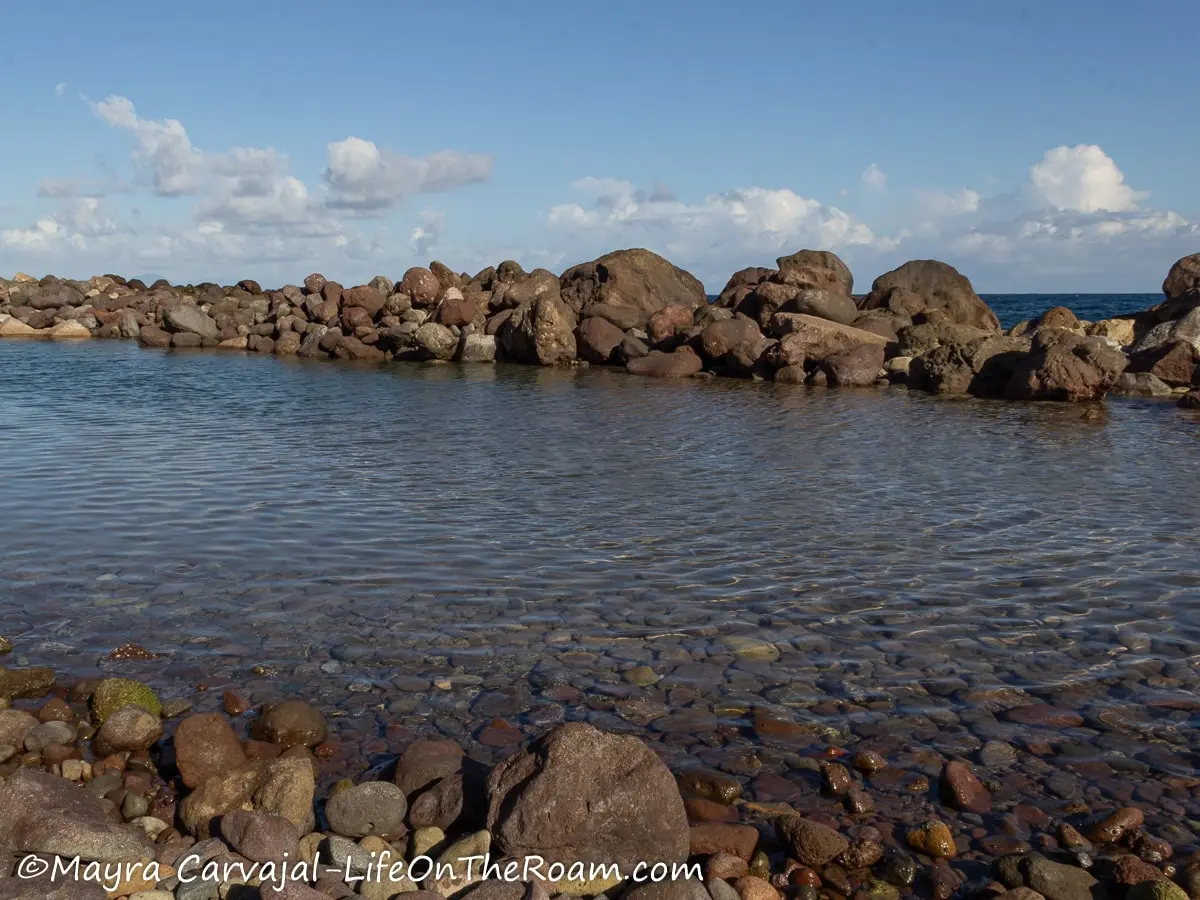
You won’t see nearly as many fish as in Well’s Bay (especially soon after a big storm), but it’s an alternative if you want an easier entry and a calmer experience as the small pond was formed by placing big boulders near the shore.
The surroundings aren’t the most scenic, to get here you have to go behind the junkyard. I just kept my head in the sargassum-free, crystal clear water and had fun spotting pretty juvenile fish such as Sergeant Major, Yellowtail Snapper, Clown Wrasse, Parrotfish, Damselfish, and Ocean Surgeonfish.
Go in with water shoes, there may be fireworms on the rocks.
This is worth only if you’re spending several days on Saba, you have access to a car (don’t rent one only to come here) and you’re not expecting a mind-blowing snorkeling experience.
A nice one, yes. Not a “You must come here” one.
Otherwise, it’s not worth paying a taxi to pick you up from your place and drive you back since you’ll be better off paying for a snorkeling trip on a boat, with truly scenic views. A good way to visit Gary’s Pond is to add it as a swimming and snorkeling stop in your last leg of the Gilles Quarter hiking trail.
Learn About Saba’s History at the Harry L. Johnson Museum
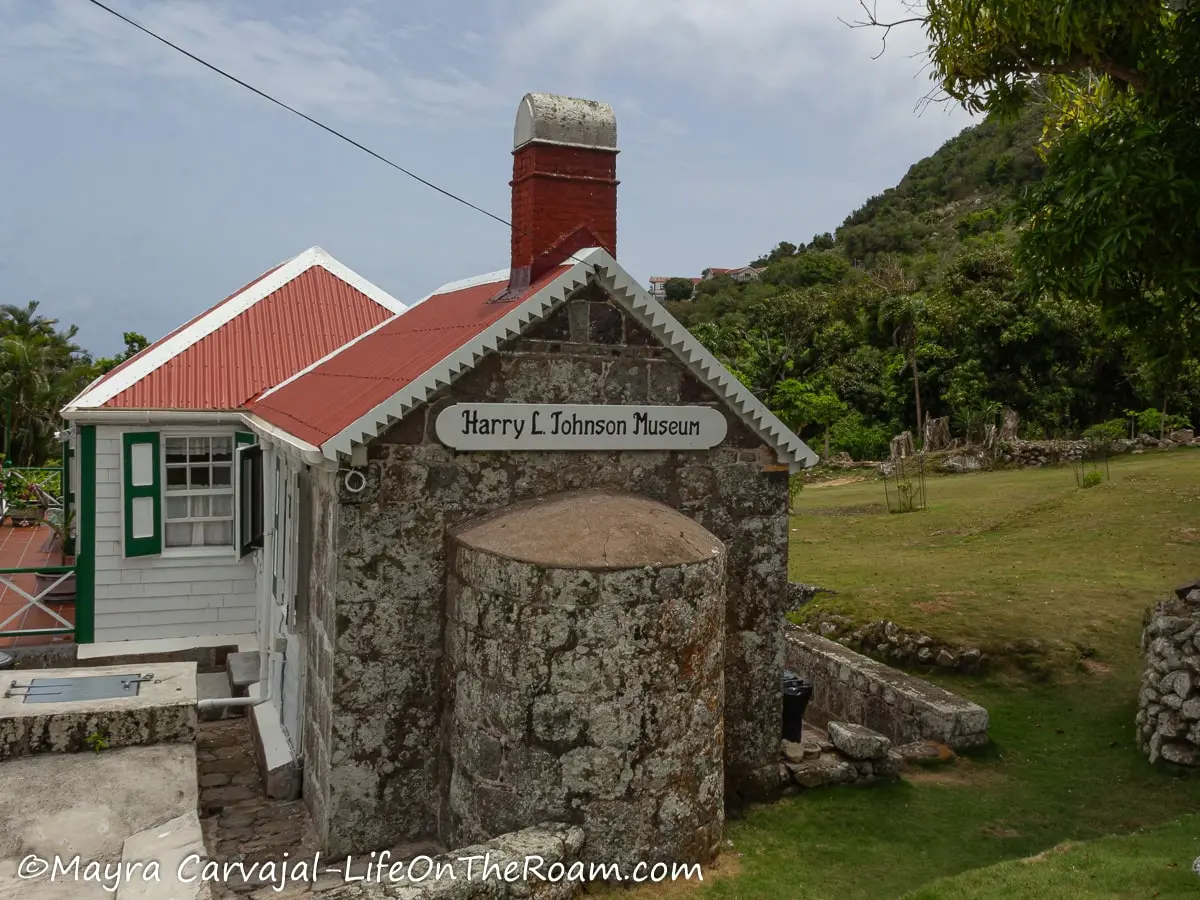
A helpful guide welcomed us to the Harry L. Johnson Museum and told us many interesting stories about Saba’s past.
This 19th-century traditional Saban cottage in Windwardside depicts the island life in the old days. It goes as far as the pre-Columbian era, represented by artifacts recovered during archaeological excavations, belonging to the indigenous peoples of Saba.
The house, with its antique furniture and utensils brings us a little closer to the present day.
The kitchen is original to the house, featuring repurposed bricks that came in ships from The Netherlands and were later used to build warehouses in St. Eustatius, and then used to build houses across the Dutch Caribbean.
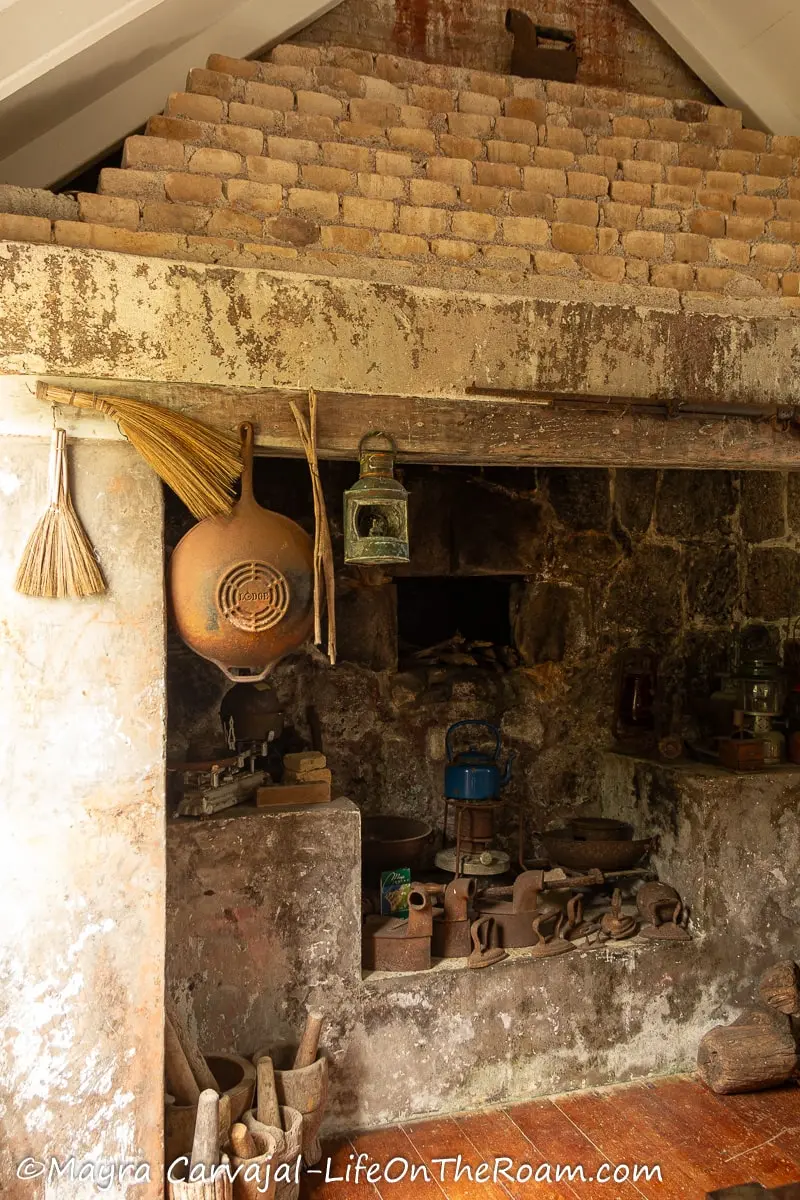
This is how people cooked before there was electricity on the island which didn’t happen until, believe it or not, the early 1960s.
Can you imagine being in this kitchen in the height of the summer?
It’s fascinating to see how Sabans overcame obstacles. Old photographs show you scenes from a time when there wasn’t a pier or a road, and everything was delivered to the island on wooden fishing boats struggling to make it to the rocky shores.
A striking detail is that all the materials and tools used in the construction of the house with all the original stuff inside, including the 19th-century dining ware, the hand-cranked Victrola, even the organ in the sitting room, were carried by hand all the way up from the sea at a time when The Road didn’t exist. Remember all this when you go to The Ladder.
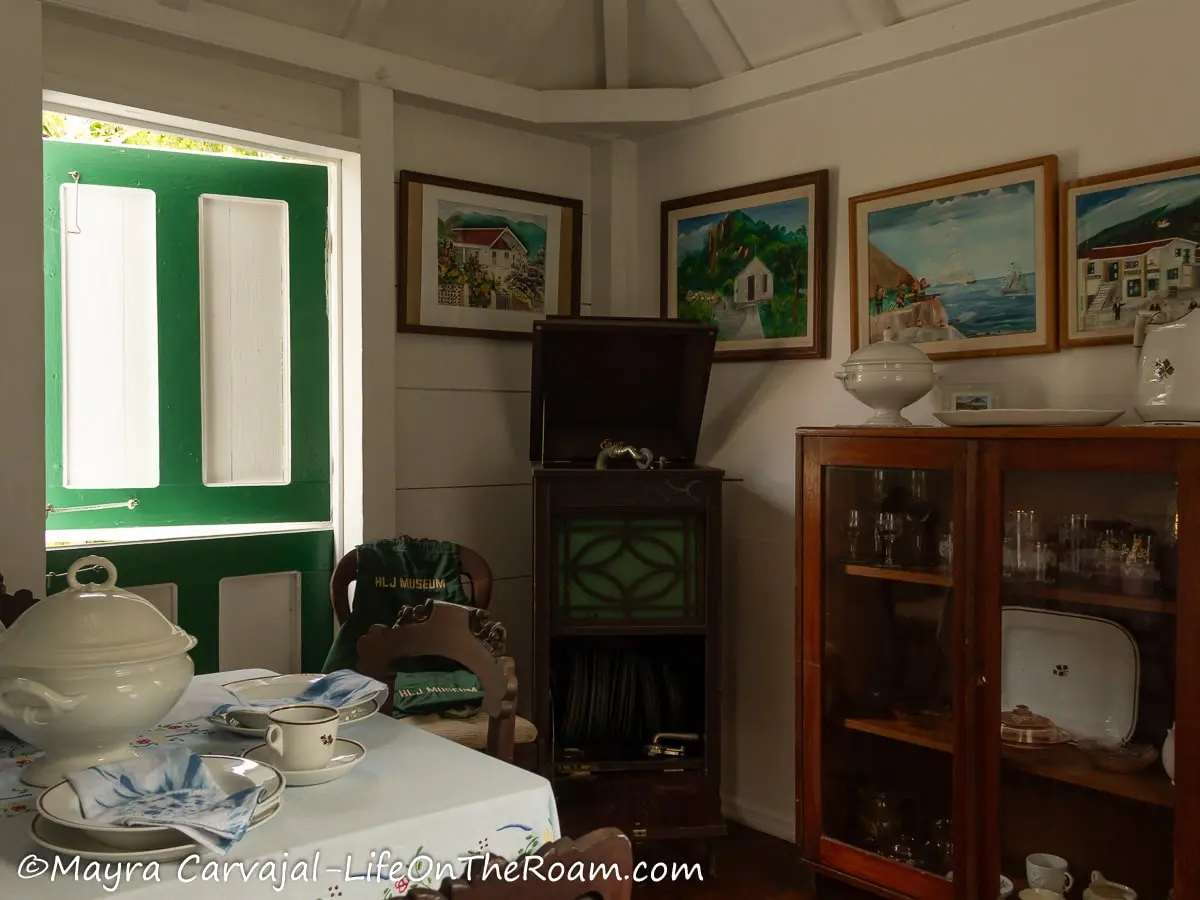
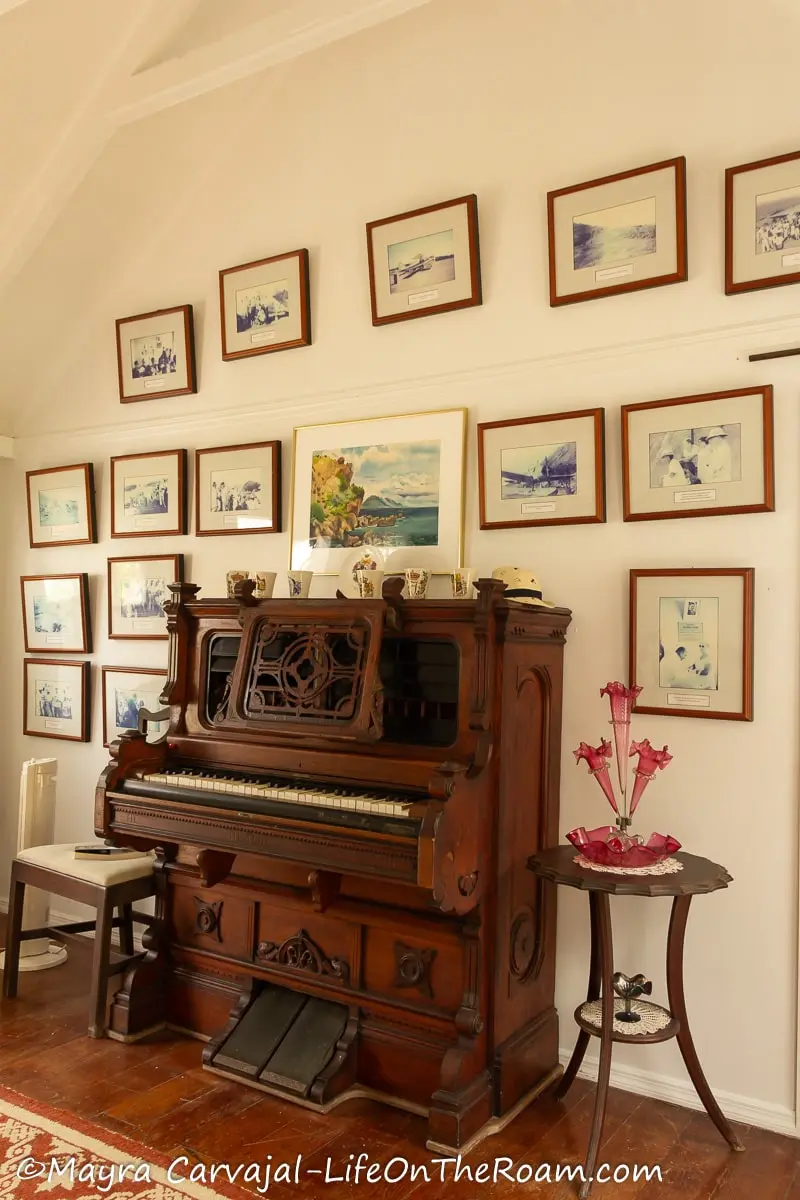
You’ll also see a master bedroom and a display of nautical instruments and documents.
After visiting the museum, spend some quiet time in the beautiful gardens where croquet games are held most Sundays. You’ll also spot cute rabbits.
Park Lane St. 12; Open Tue. to Fri.: 10AM-3PM; Sun: 10AM-3PM; General admission: US$3
Try the Delicious Saba Spice
When I think of Saba, memories of this velvety, sweet rum splash all over my taste buds.
Saba Spice is a spiced rum made only on Saba, an artisanal concoction brewed by Saban families. They add local herbs, fruits, and spices like cinnamon, cloves, and anise to create a savoury liqueur that I enjoyed by itself, poured over ice cream, and with French toast.
Trying Saba Spice is one of the truly unique things to do in Saba as you can’t find it anywhere else.
The taste and thickness varies depending on the family’s recipe. You can buy it at Big Rock Supermarket, at Everyt’ings, and at Handmade on Saba in Windwardside.
You can try Saba Spice at most local bars. My favourite is the one I had at the Tipsy Goat bar at Juliana’s Hotel, thick and strong. Absolutely fantastic!
See Saba’s Traditional Architecture: a Sea of Gingerbread Style Houses
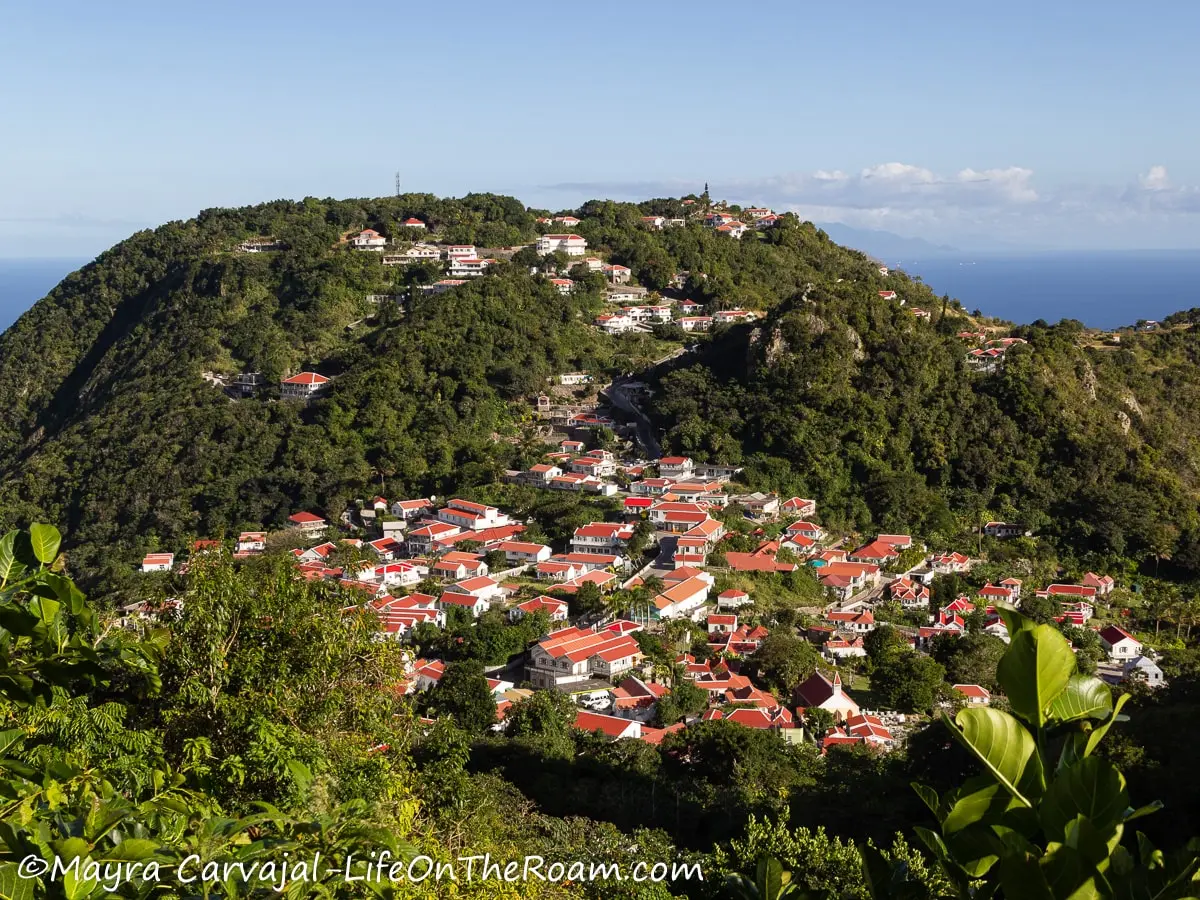
Seen from above, Saba villages look like a scale model of a fairytale town packed with cute gingerbread houses on top of verdant hills.
Up-close, when you walk around the hilly narrow streets, you can see the lovely details of the typical Saba cottage.
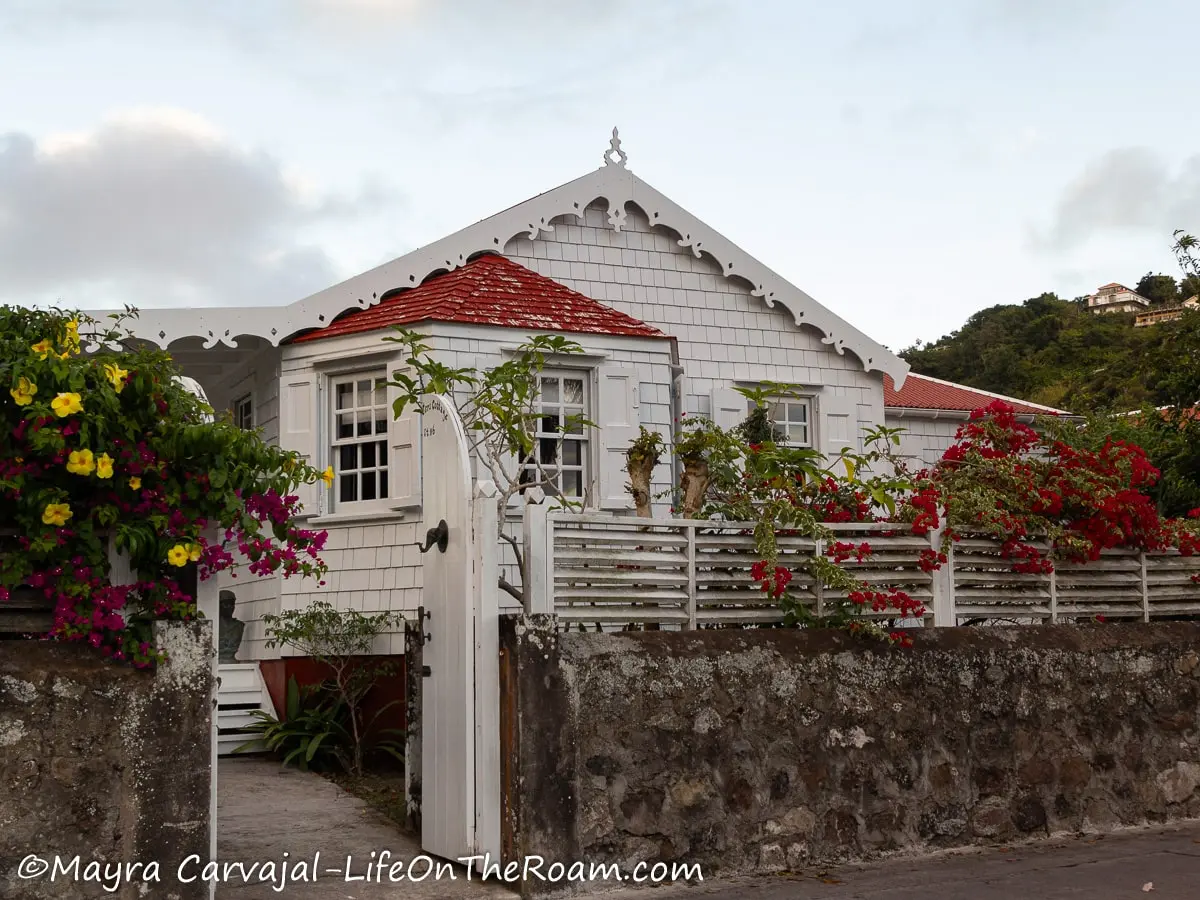
White walls with dark green (or white) trims and window shutters, and a hipped red roof. All embellished with Caribbean gingerbread trim, a decorative wood lattice you can see in traditional homes in the capitals of nearby islands such as Marigot in Saint Martin and historic Charlestown in Nevis.
Most houses sit on a volcanic rock foundation and have a covered porch with white and green railing and a lush garden with multicolour flowers, with butterflies and birds flying around.
Churches have a distinctive look, a variation of the standard architectural style that’s strictly enforced across the island.
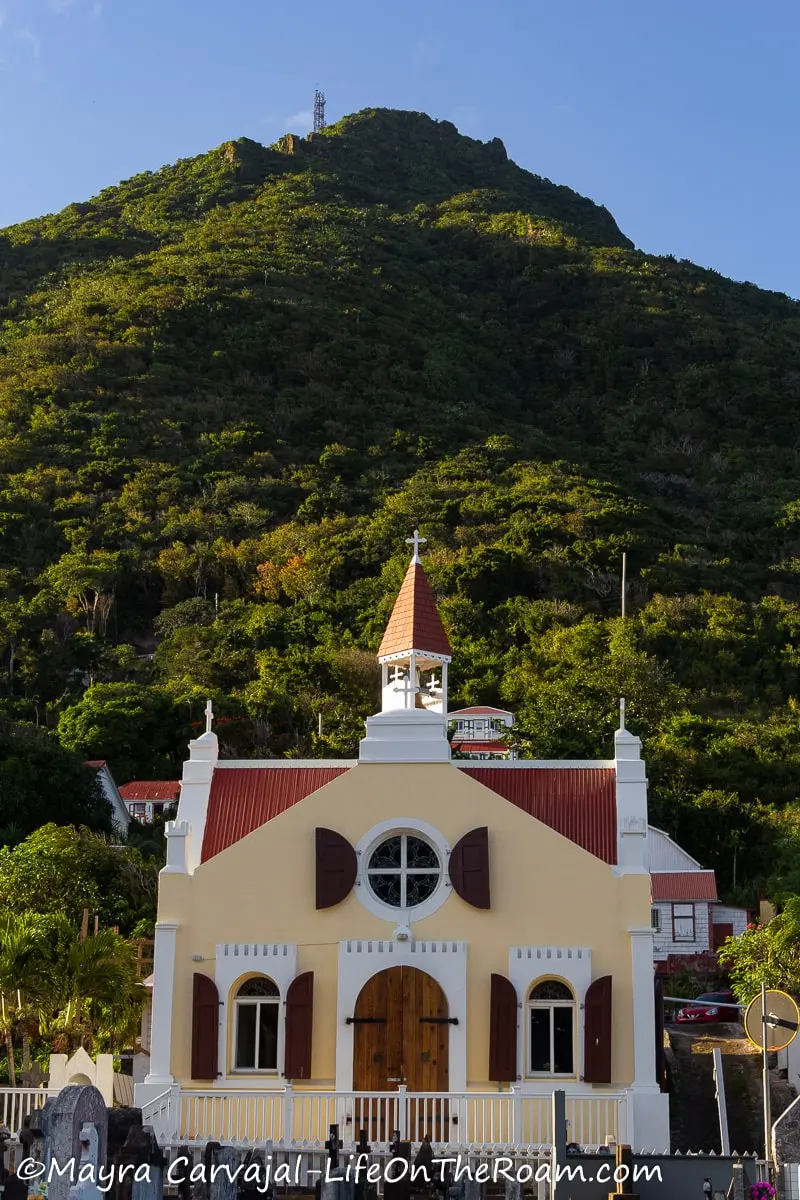
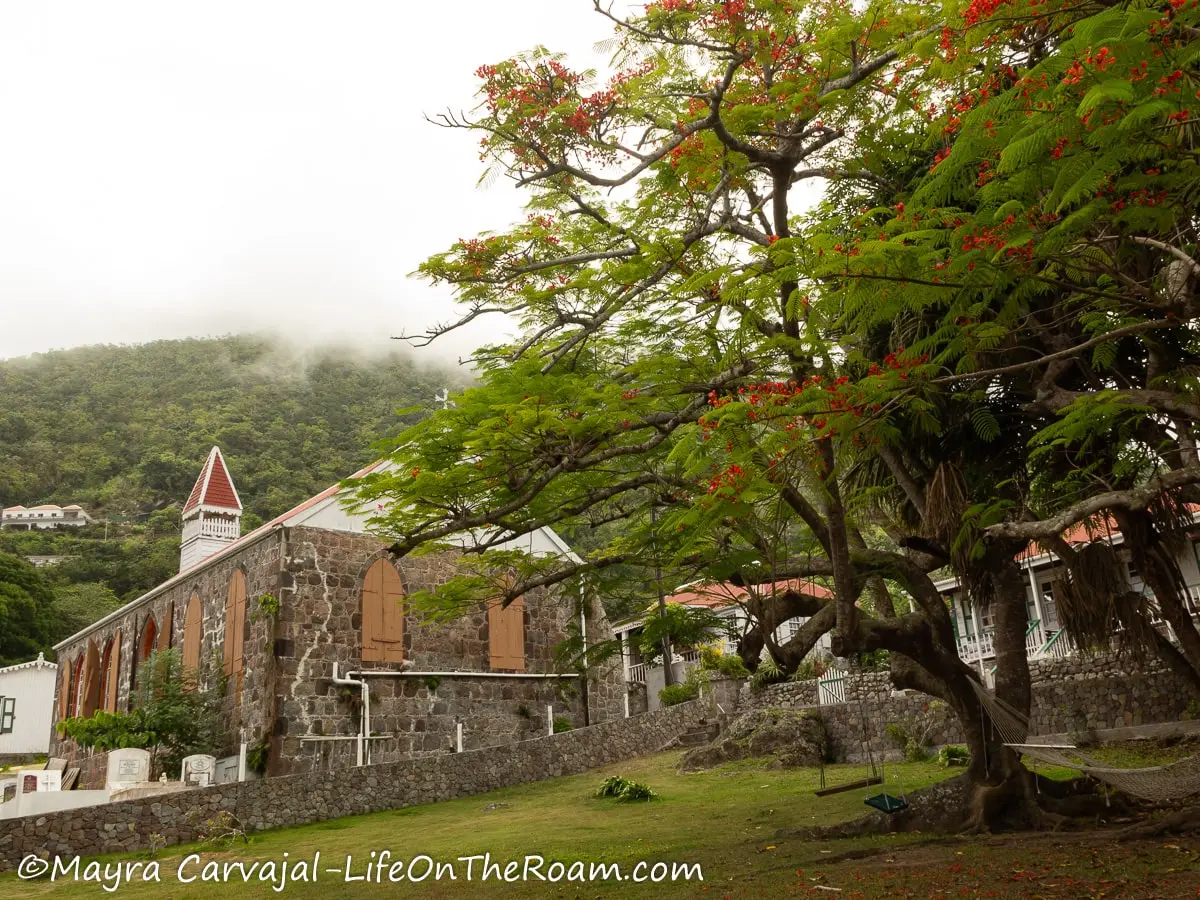
The best way to see the typical architecture of Saba is to walk around Windwardside, where you’ll also find cafes, restaurants, a small museum, some stores with local arts and crafts, and most accommodations on Saba.
At The Bottom you’ll also find some churches, a small museum, and cafes.
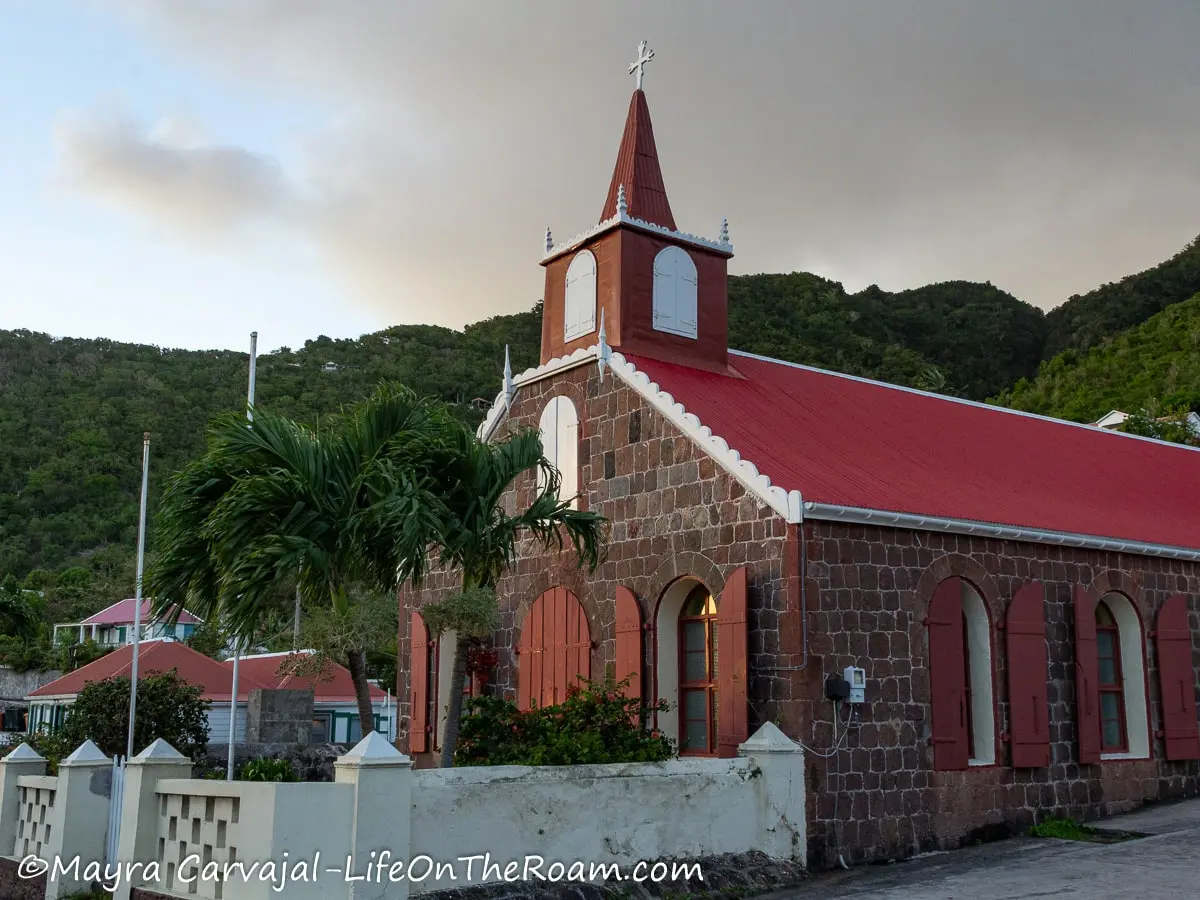
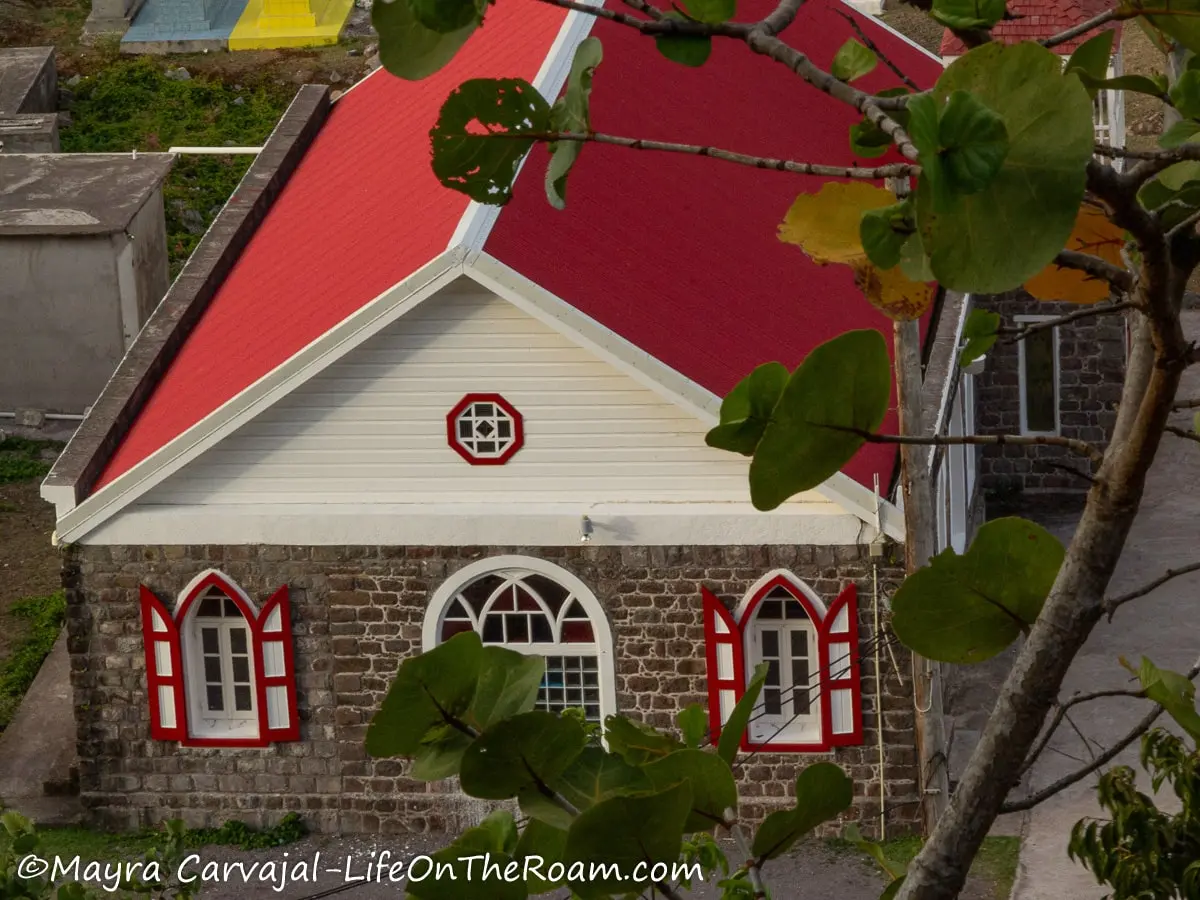
Check Out Saba’s Arts and Crafts
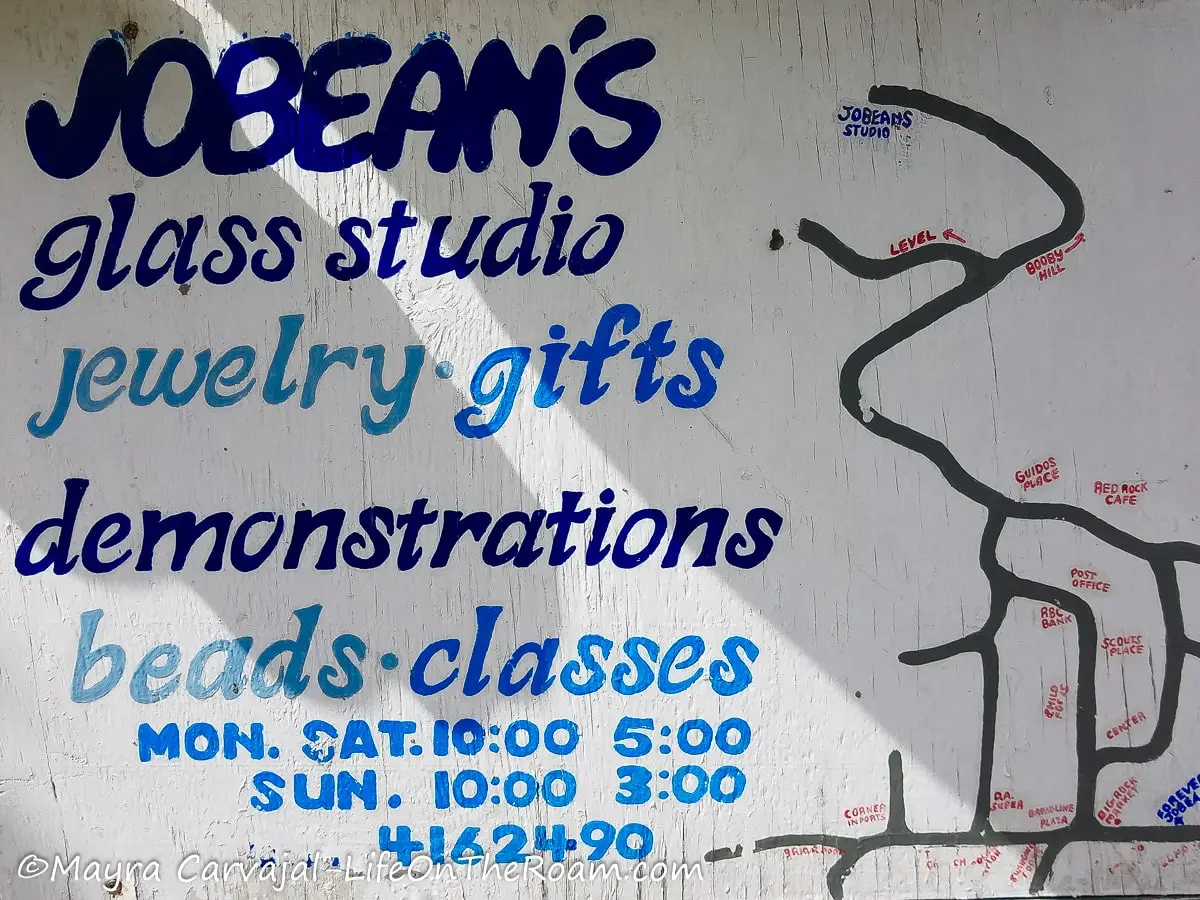
Art is alive and kicking in this tiny island, whether you’re looking forward to seeing and supporting the work of local artists or to having a hands-on experience to bring home something you made.
All I list below happens at Windwardside.
- Visit the Five Square Art Gallery, across Unique Supermarket, to find paintings, sculptures, prints, and cards.
- At Lambee’s Place you’ll meet the Lace Ladies. They create drawn thread work pieces known as Saba Lace, deeply rooted in Saba’s past.
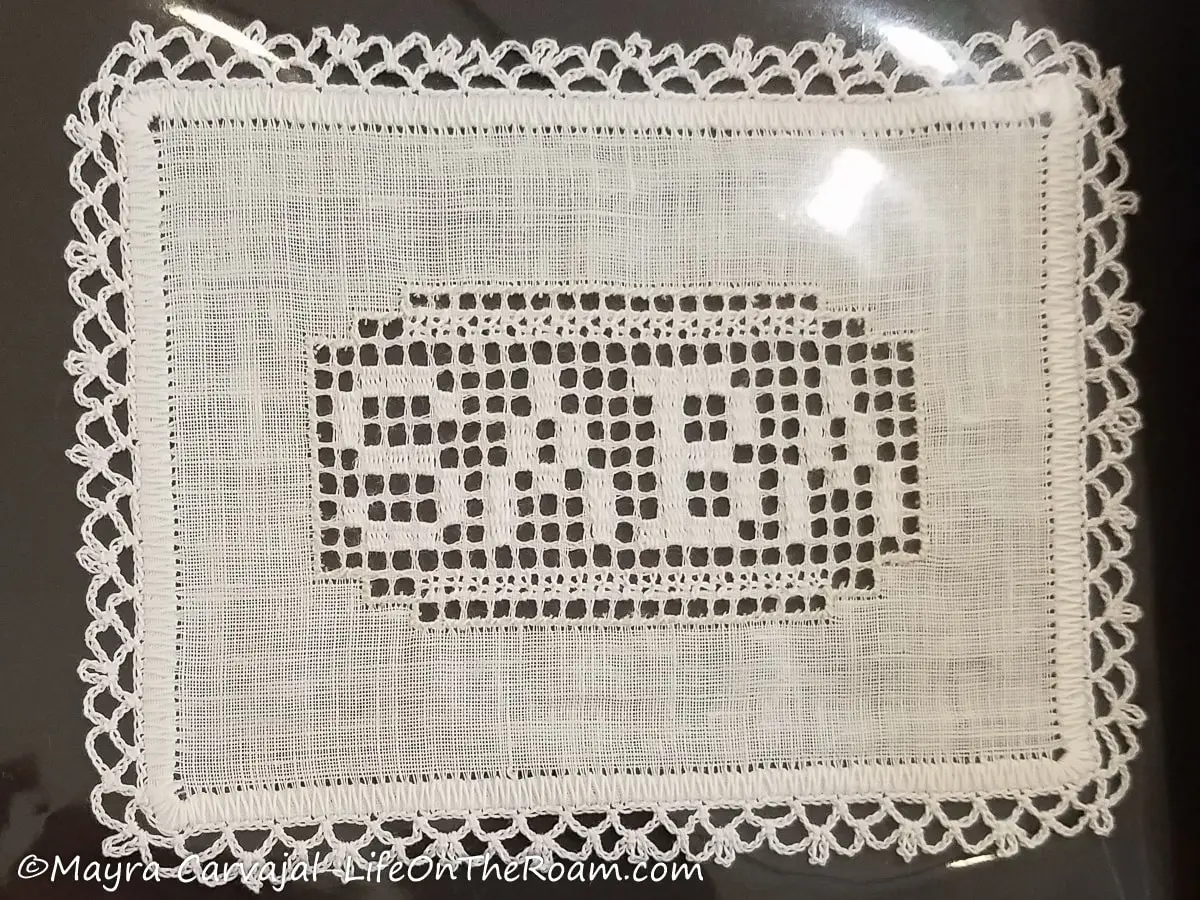
In the late 19th century, Mary Hassell’s parents sent her to study in a convent in Venezuela, where she learned this technique also known as Spanish Work. Little did she know that years later she would be creating a lucrative industry. She went back to Saba and taught other women at the same time mail service arrived on the island. Soon, mail orders poured in and so did the money.
The Lace Ladies carry on this tradition, meeting every Thursday from 3PM to 5PM. It’s a good opportunity to see them at work and to learn about this craft, embroidered in Saba’s history.
- Stop at Handmade On Saba, on Breadline Plaza, for beautiful cards, ornaments, boxes, pottery, marmalades, tote bags, hand-dyed clothing (made with local leaves), jewelry made with seeds from Saba, and all local crafts. Check also the workshops available during your visit.
- If the Arts & Crafts Market at the Saba Tourism Office Deck is up during your visit (it’s not a permanent and it often follows the schedule of the Sea Dream Yacht Club boat) you’ll see a variety of handmade items: crochet, jewelry, watercolour paintings, Saba Lace, jellies and sauces, and more.
Want to learn a new craft while you travel? You can do that here and make your own souvenir.
- Go to Jobean Glass Art and take a half-day or full-day class (must schedule in advance) to make your own beads crafting Venetian glass. Or go to the studio for a live demonstration and see the jewelry and glass art on display.
- The Sea & Learn Foundation has a program named Create & Learn where several artists hold workshops teaching different skills during 10-day events scheduled four times a year. Check it out here if you want to time your visit with this activity.
- For more workshops you can head to The Studio, at Juliana’s Hotel to explore different media: textiles, glass, painting, jewelry, ceramic, and more. Enjoy fun sessions that include a 2-hour workshop, cocktails, appetizers, and supplies.
Try Local Flavours at Saba’s Restaurants and Food Festivals
There are a handful of restaurants on Saba to choose from, whether you’re looking for a quick bite or a fancy sit-down meal.
I loved the cookies, pastries, and cakes at Bizzy B, a bakery/café where you’ll also find soups and paninis.
I also liked the fish burger and salads at The Hideaway and I enjoyed an excellent dinner at Tropic’s Cafe.
You can schedule your visit during one of Saba’s food fests to try special menus and tastings. In addition to live music, and depending on the festival, you can participate in treasure hunts, guided hikes, themed art workshops, and even rum crawls.
Some are the Pasta Fest (last week of September), the Saba Wahoo Food Fest (first week of December) and the Rum & Lobster Fest (between first and second week of November).
Go for a Spirits and Wine Tasting at Saba’s Bars
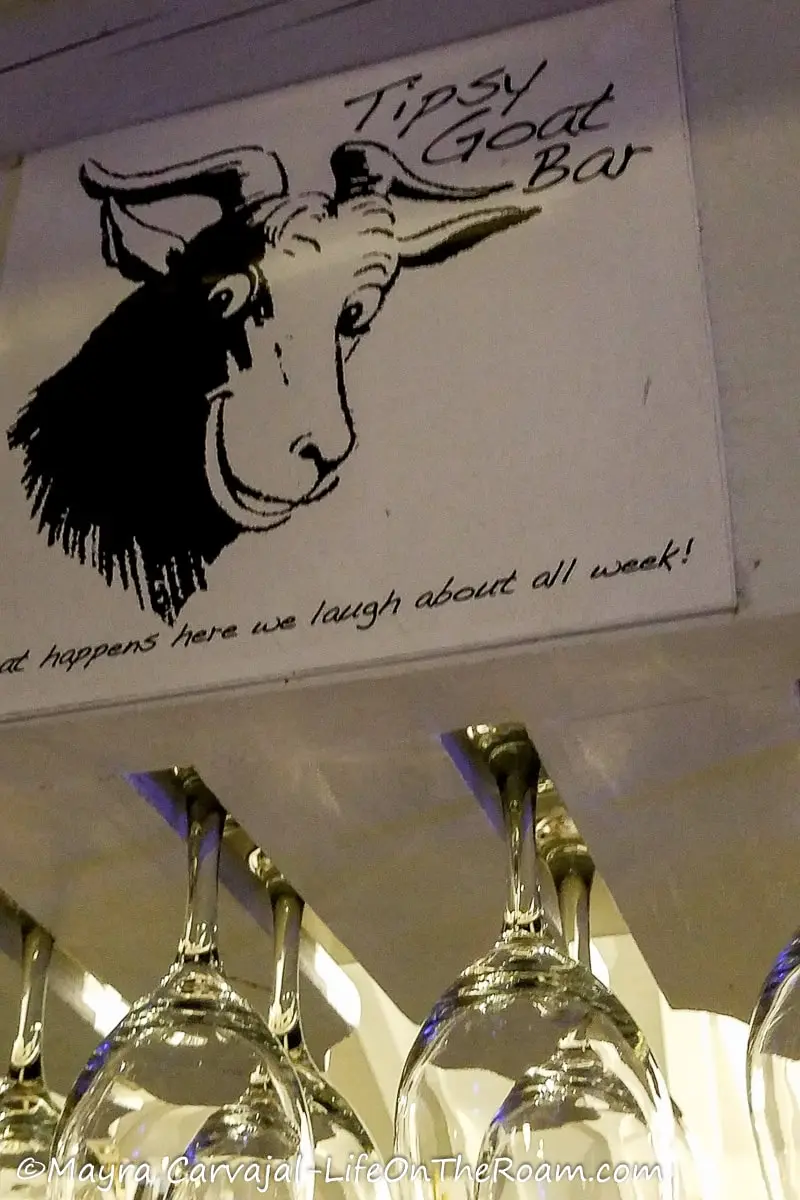
If wine is your thing, go to Chez Bubba where you’ll find a large selection including more than 100 wines from around the world. You can make reservations for a wine sampling on Saturdays from 4PM to 6PM. They also have a Gin & Tonic tasting, with a wide variety of gins.
Rum lover? Go to Tropic’s Cafe at Juliana’s Hotel and partake in the Unspoiled Queen Liqueur Rum Tasting happening on Sundays.
More like cocktail lover? Try local concoctions at your new favourite bar during happy hour.
Take a Sunset Cruise
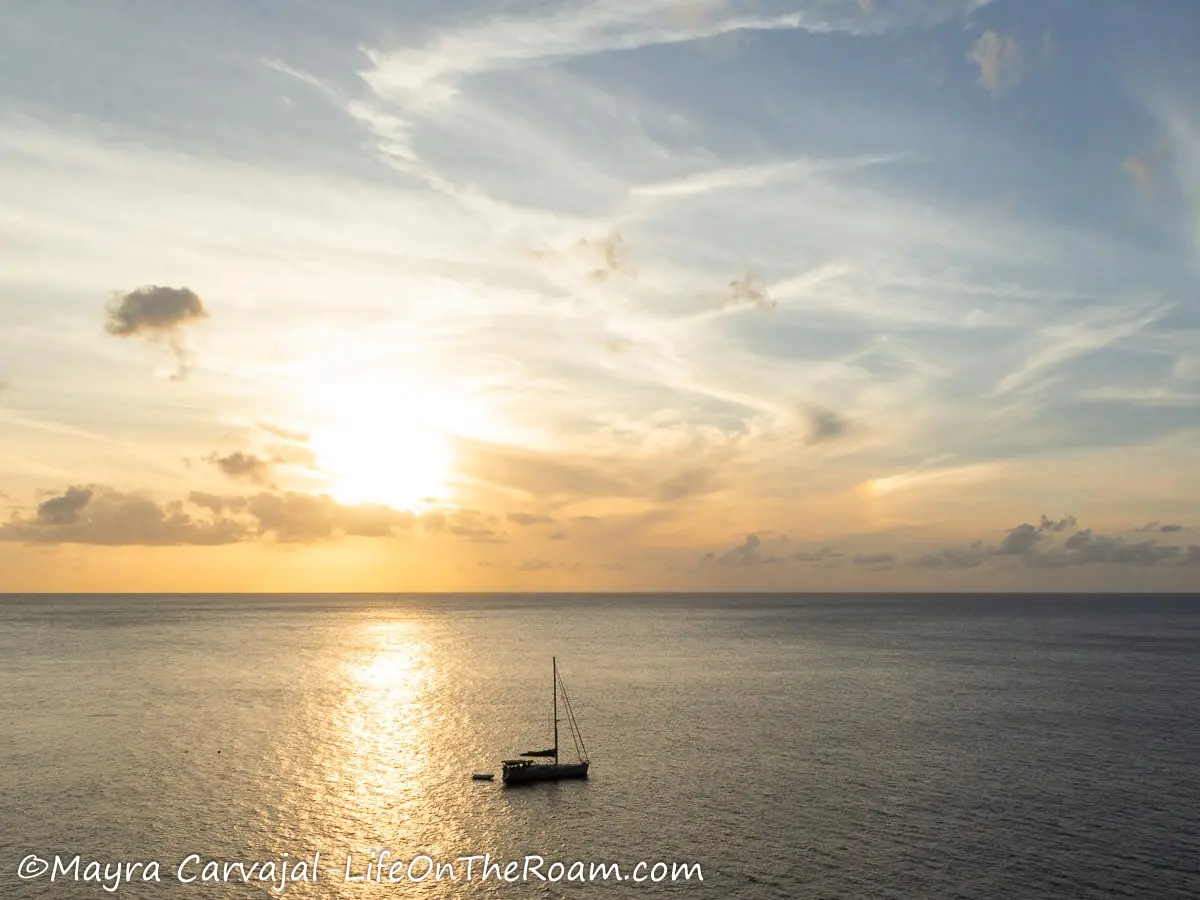
On a 2-hour cruise with Sea Saba you’ll see a who-is-more-gorgeous competition between the unobstructed views of the sunset and the scenic views of the island from the shore, washed in a golden light.
The maximum capacity is 20 people and it includes drinks (you can bring your own drink too). You can swim and snorkel, as long as you do it before drinking.
Enjoy Birding on Saba
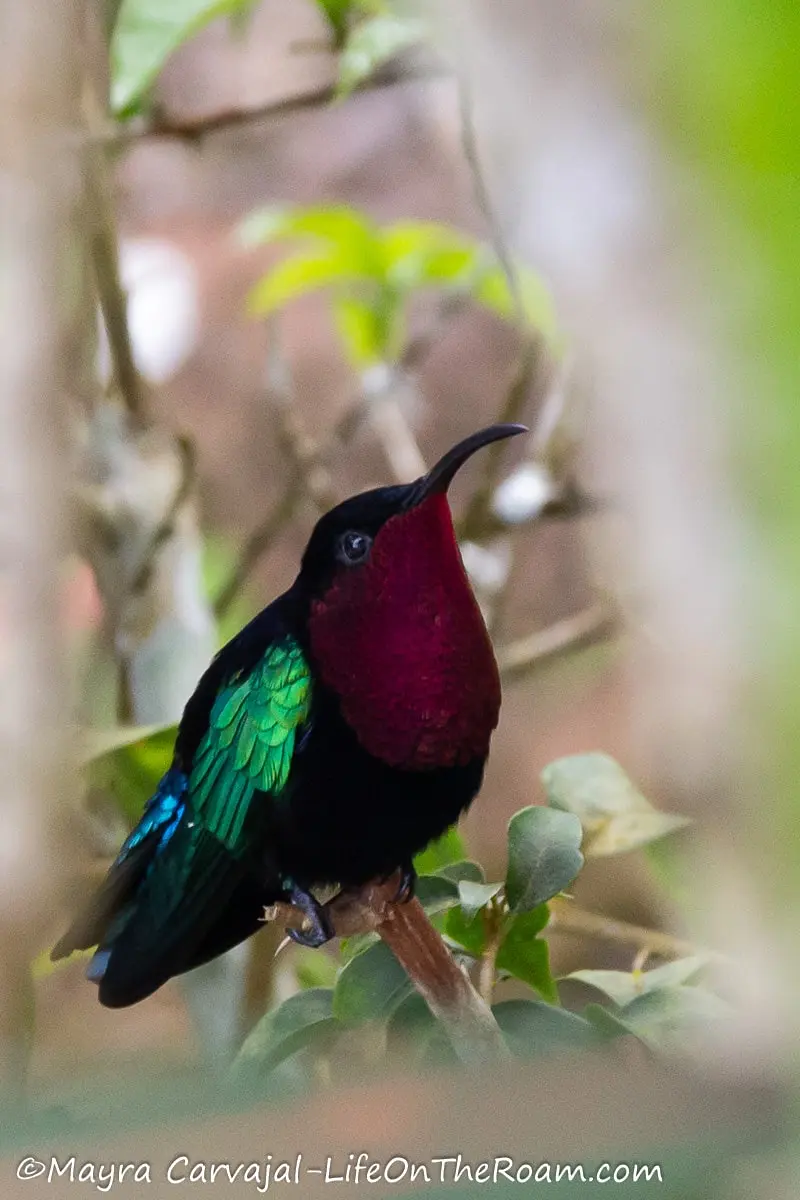
More than 100 bird species have been registered on Saba, including migratory and resident birds, and species endemic to the Lesser Antilles such as the Brown trembler. The nooks and crannies of Saba’s dramatic cliffs are breeding ground to a large population.
If you head to the Sulfur Mine trail keep your eyes peeled for Ospreys, Sooty Terns, and Brown Noodies, among others.
Did you know that St. Eustatius and Saba hold the world’s largest colony of Red Billed Tropicbirds, a majestic long-tailed white bird?
You’ll see tons around Fort Bay and Old Booby Hill, along with Magnificent Frigatebirds around the Tidal Pools.
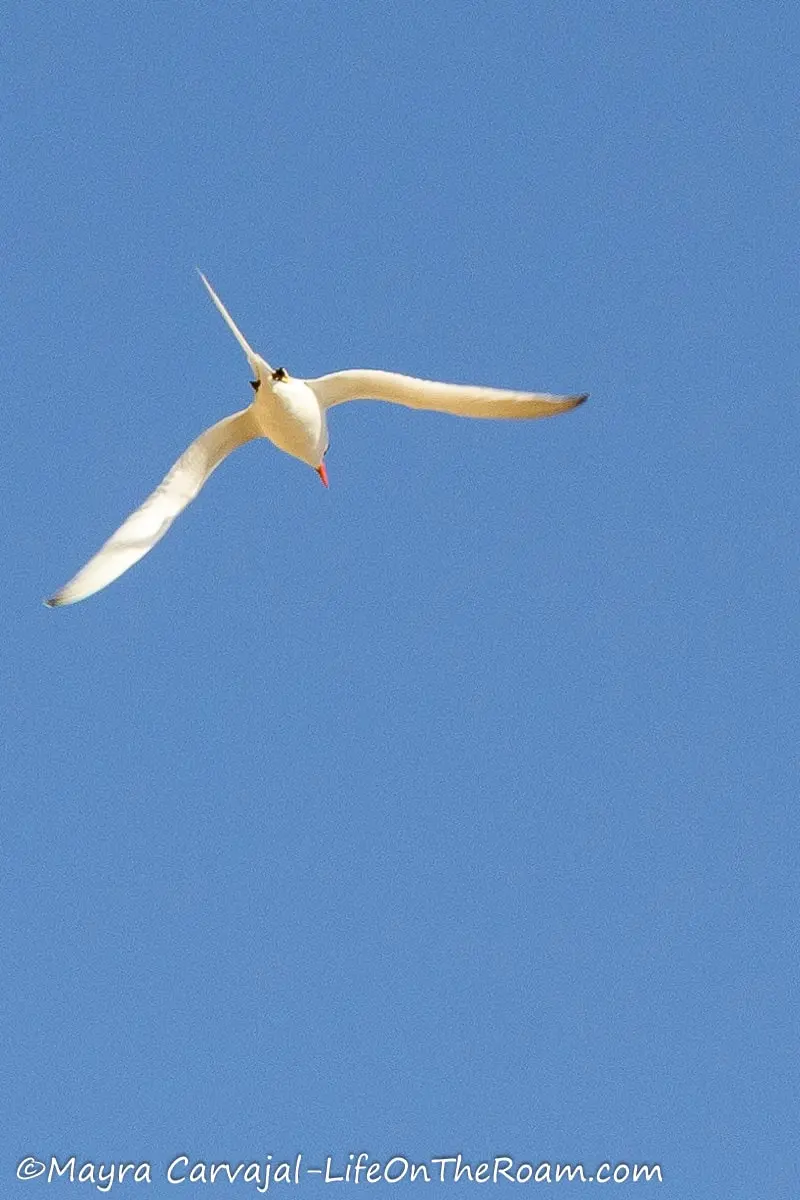
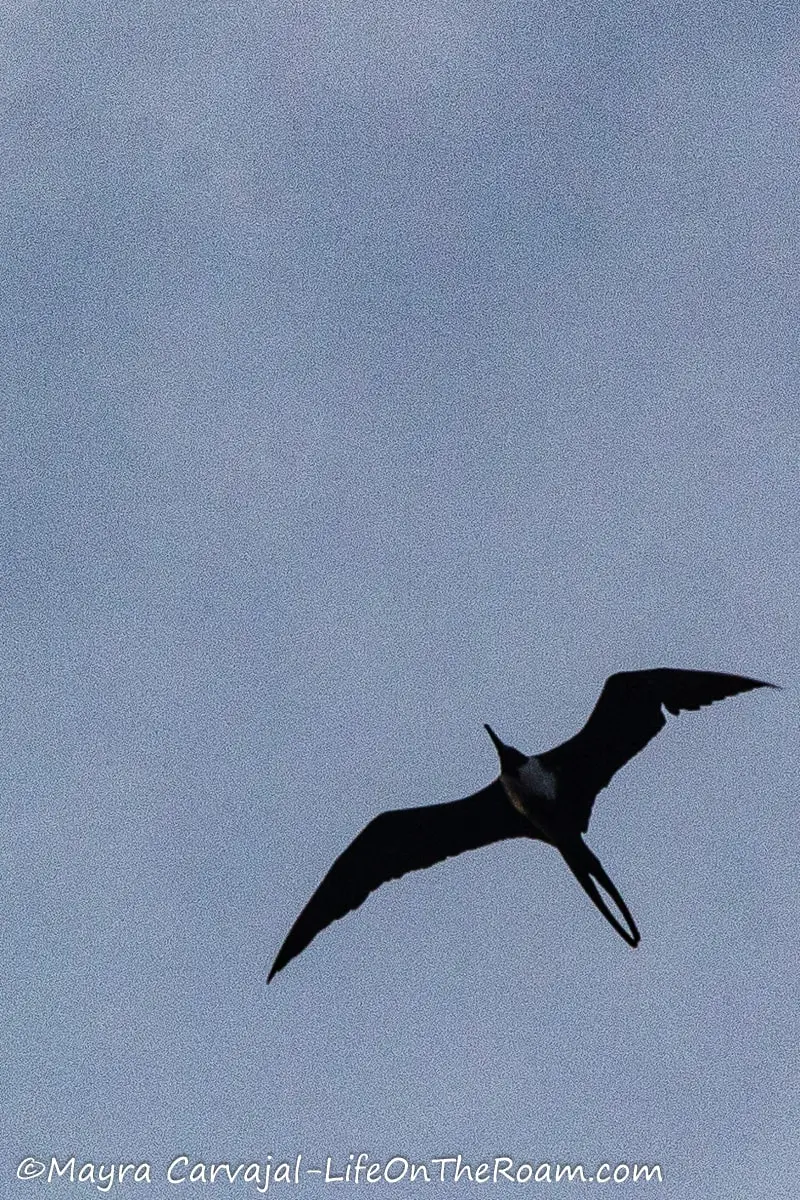
The Ladder is another good spot for birdwatching on Saba.
Hummingbirds and Bananaquits are a common sight in gardens and trails and the Brown Booby bird can be seen near the shore.
You may want to check out the Saba Bird Fest which happens the last week of September, with guided tours available.
Complete the Saba’s Triathlon or Run a 5K
I must warn you, Saba’s hilly landscape doesn’t make this an easy endeavour. You won’t run or walk more than half a mile before finding a slope, most of them quite steep. There are several races throughout the year:
The “easiest” is the Bizzy B 5K, which goes around the Bottom. You can also join the 10K by Chez by yourself or as part of a team of four.
If you’re up for a tough challenge, sign up for Saba’s Triathlon in the second half of January (you can do only the run if you want), or for the Sea to Scenery Run on Saba Day, in the first week of December.
Sea to Scenery starts at Cove Bay and finishes at the top of Mount Scenery, on a six-kilometre journey where you’ll ascend 1,000 metres (0.6 miles).
Check the dates on the Facebook page of event66.nl
Saba has enough things to do to keep you entertained for days. You’ll feel inspired to explore its natural wonders, to create beautiful art, or to relax and enjoy the scenery. If you like the vibe of uncrowded small islands like Saba consider visiting Nevis, only a short trip away.
YOU MAY ALSO WANT TO READ
BOOKING FLIGHTS AND ACCOMMODATIONS
Book your flight without losing your shirt
We check Momondo to find great deals to book our flights. Also, check Great Escape: it combines the listings from Expedia, Kiwi, Kayak, (and Skyscanner on the premium service) to find the best airfares.
To find a place to stay for less
Booking.com: this site combines everything under the sun. You’ll find hotels, apartments, B&B, hostels, rooms, etc., with all sort of filters to make your search a breeze.
Hotwire: the first site I check when we plan to stay at a hotel for a few nights. You can save anything from 20% to 60%. Use the search filter to find what you want and you’ll end up with three listings that match your criteria. You’ll know which one you’ll get after you book. If you can handle a little bit of uncertainty you can score big savings.
House Sitting: you take care of people’s pets and house for free while staying for free. It’s the closest thing to experiencing a place “like a local”. But it comes with responsibilities… Are you an animal lover? It may become your new way to travel.
To get travel insurance
SafetyWing: travel medical insurance that gives us peace of mind knowing that we’re covered in case of emergency. It’s convenient, affordable, and suitable for digital nomads who spend a long time outside their home country.
Check the full list of travel resources on my Resource Page for more options and savings
